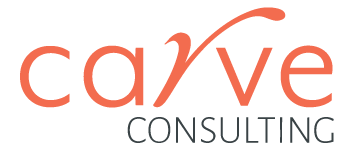As remote working has spread widely and quickly throughout most workplaces, we are talking to many people keen to keep some level of remote in their work-life. Like anything new, there are some concerns and uncertainties. One of the common questions of concern we are hearing is “how do I stay visible when working remotely?”
In particular, people who are mid-career are finding benefits in remote working and are expressing they don’t want to go back full-time to the office – and if they are forced to they’ll move on. They are still ambitious to progress in their career, but are uncertain what they have to do “to be seen”.
Being seen at work has very little to do with office-based vs remote. The word “seen” can be more accurately expressed as “how can I be recognised at work?” Being “visible” in your workplace isn’t just a condition of remote working. You can just as easily be overlooked when you are co-located with colleagues and managers.
If you have a good team leader, manager or executive, they understand a big part of their role is to understand the individuals in their team and recognise the value they bring. Good managers not only “see” those adding value in their own team but the impact of colleagues in other teams as well.
Visibility does not equal productivity. Not even close.
Buffer
When it comes to being visible and recognised, the key is to focus on a mindset shift rather a location shift. The question to ask yourself is “how can I add value to my team and the company, regardless of where we are all based?”
The best way to be seen/recognised is to contribute, communicate and add value.
5 ways to be “seen” in a remote workplace
1. Over-Communicate
In an office you might drop an idea or hint to a passing colleague, or pick up on office gossip, but neither of these are satisfactory alternatives to clear, consistent communication.
While you develop your remote working capability, the concept of over-communicating will help you find a balance. This will also mean your colleagues and managers know what you are working on and where things are at with a project.
Of course the alternative to “over-communication” is to keep things to yourself. Colleagues, team members and management, not knowing where things are at, may start to sense you’re not working towards an agreed goal, and just doing your own thing.
Even if everything is on track, and all the boxes are ticked, you still need to find a way to communicate this.
Think about who might be interested in knowing what you are working on and how much they know. Share information as clearly as possible, and in a way that the recipient will understand. And remember, sometimes you might need to communicate the same thing more than once.
Still not sure about what sorts of things you should be communicating? Here’s some tips:
- Have you had an idea on how to improve something? Capture your thoughts, the context and benefits in a quick document and share it.
- Are you feeling that your current task isn’t going smoothly/taking too long/not a fit for the project? Reach out as soon as possible and ask for guidance.
- Have you found something unexpected that might delay the project? Prepare a quick document, again with context, and share it with those on the project.
- If something feels off, say it! Feedback is equally important in an office or a remote environment, but in a remote situation it can feel slightly harder. Reach out to someone who can help clarify the feeling or resolve the situation.
Extra credit: Remote working environments naturally require you to have excellent written communication skills. If you are not confident in your written skills, book into a course or ask for help from a mentor, colleague, or friend.
2. Don’t hide in a corner
As a natural introvert, I know from personal experience it’s much easier to isolate yourself working on your own, or not collaborate with others unless it’s strictly required.
As extroverts are naturally drawn to interacting and communicating with others, they are the ones who’s work is more commonly “seen”, whether in an office environment or remotely.
If you are unsure how to best share your work or communicate across teams, identify a mentor (either in your workplace or elsewhere) that you can get some guidance from on sharing your best self.
In a remote workplace, the most common way that we visibly “see” each other is on video conference calls. So don’t be the person that hides with the camera turned off. As much as possible keep your camera turned on and engage in the conversation where appropriate. In some video conference applications, the people that are at the top of the screen are the ones with the cameras on, and thus more likely to be seen.
Extra credit: Make sure you have a professional video setup – good lighting, clean background, camera at head height.
3. Learn from and collaborate with your teammates
Even when you are working in a different location you are still part of a team. This might be your direct team, a cross functional project team, or the company-wide team. There are a number of ways you can achieve this.
- Reach out to one of your colleagues, at your level of experience or a step up the ladder, to chat about vision, strategies to improve, or something you’ve read that could have an impact on the company or team.
- Use the team communication channels (eg. Slack, Teams, email groups, etc) to send a message and ask a question or to brainstorm something new.
- Deliberately make time for brainstorming and creativity. When you’re working remotely, there are fewer opportunities to just chat and share ideas – you tend to focus much more on the task at hand. So it’s important to consciously schedule time with teammates and brainstorm ways to improve things.
- Maintain a good network of people on various teams. This is as important in a remote environment as it is in the office. You may just need to be more deliberate about engaging with other teams when it comes to remote working.
4. Find a mentor
This is as important as it’s ever been, whether you’re in an office environment or working remotely. In an office environment it may feel easier to strike up relationships and reach out to others for help. In a remote team the only difference is you might have to take more initiative.
The mentor-mentee relationship doesn’t have to be formal or official to be useful. Identify someone in the company you admire, or someone you feel you can learn a lot from, talk to that person often and ask them specific questions. You can also have multiple people you can learn from (both inside or outside your company) on your mentor list.
You can use these mentors to answer questions, learn, develop in your role, improve your skills and connect to the sources they learn from. And remember, when you’re ready or are approached by a colleague, pass it on and be someone else’s mentor.
And if this is your first time working remotely (like it is for many people) find a great role model, that that has experience in remote working, can help you be a successful remote worker.
5. Add value
In most organisations, the company goals are usually shared with the full team. They are a very good indicator of what’s most important at any point in time for your company. Take the time to understand these goals and how you and your team contribute to them. Make the company goals your individual goals and try to come up with ways you can contribute.
Here’s some ideas on how you might add value:
- Is the company focusing on growth? Come up with some ideas to improve your and your team’s productivity when working (through automation or improved processes), or identify a new opportunity or area for an existing product/service.
- If your company is shifting to another product/industry, take the time to discover people in your position working in those products. What do they know? How do they work? What are their main challenges? This will help you to anticipate those questions in your company and bring solutions.
- If your company is in hiring mode – volunteer to help onboard new employees or be a team buddy.
- If you find something that doesn’t work as well as it could be, or you have identified a better way of doing things, speak up!
Key Takeaway
If you take only one thing from this article, start shifting from being physically visible to visible through communication. The pay off in clear, consistent and visible communication may or may not be immediate, but more likely it will have a long term benefits to your reputation and career progression, regardless of whether you work remotely or in a central office.

